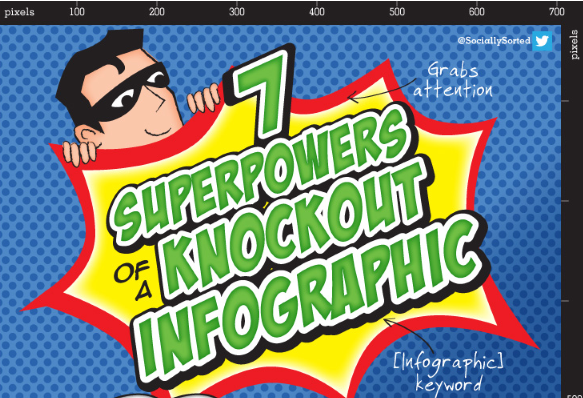Inbound Marketing: Do You Put Enough Thought and Effort Into Comments?
 Are you in the habit of leaving comments on blog posts that you read regularly? If so how much thought and effort do you put into writing your comments? If the answer is not much, then you may be surprised to know that there is an art to leaving comments. After all, isn’t your aim to attract potential new readers and local leads by leaving a comment? There is absolutely nothing worse than those annoying comments from people who can’t even use their own name! Instead they use keywords or hide behind some form of alias. How on earth are they supposed to become well known in their industry?
Are you in the habit of leaving comments on blog posts that you read regularly? If so how much thought and effort do you put into writing your comments? If the answer is not much, then you may be surprised to know that there is an art to leaving comments. After all, isn’t your aim to attract potential new readers and local leads by leaving a comment? There is absolutely nothing worse than those annoying comments from people who can’t even use their own name! Instead they use keywords or hide behind some form of alias. How on earth are they supposed to become well known in their industry?
Related article: Infographic: What are Google's 200 Ranking Factors for SEO?
This is a huge topic and a recent August 2013 article on this called Huffington Post to end anonymous comments by Barb Darrow shows how the Huffington Post is taking action to prevent this type of comment from being left.
Trolls are just getting more and more aggressive and uglier and I just came from London where there are rape and death threats,” Huffington said in comments to reporters after a speech at Hubspot’s Inbound 2013 conference in Boston. The changeover will come in mid-September, (Arianna) Huffington said in comments to reports after a speech at Hubspot’s Inbound 2013 conference in Boston.
The Structure of Comments
Let’s take a look at the correct way to structure your comments. The following article, Sequencing the DNA of the Perfect Comment Study by Simon Heseltine, published August 2013 on Search Engine Watch.
In this study which was conducted by AOL’s Consumer Analytics and Research team the lead analyst, Joe Blechman, began by breaking down the parts of a comment into 15 elements, which we have listed below.
- Identity
- Geography
- Icon Preference
- Badges
- Number of Fans
- Number of favorites / likes / thumbs up
- Super User
- Grammar level
- Humor
- Clarity of thought
- Original article criticism
- Fact-based comment
- Links to article
- Adherence to party line
- Irrelevant / off-track
 1,351 readers from several sources as the Huffington Post, CNN and the New York Times were polled. The results showed that the least important areas of concern were humor and grammar. Comments which showed facts were more popular as was seeing that the commenter was active in the actual community, using real names and some form of icon that isn’t a default
1,351 readers from several sources as the Huffington Post, CNN and the New York Times were polled. The results showed that the least important areas of concern were humor and grammar. Comments which showed facts were more popular as was seeing that the commenter was active in the actual community, using real names and some form of icon that isn’t a default
Commenting skills
You can find more information on writing quality comments in Step 4: Teach Quality Commenting Skills written by Sue Waters which is actually a learning technique for teachers on how to teach students how to make comments on each others blogs. Topics Sue covers include why comments are important, how comments work and examples of comments. This is a free learning resource that you may just want to take advantage of to improve your skills at commenting.
Related article (look at the comments below it): Internet Marketing Tip #14: Content Development
Take-aways
 So what can you learn from this and apply the next time you are leaving comments?
So what can you learn from this and apply the next time you are leaving comments?
- Well first it is important that you are actually active in the community. A good step is to select three or four blogs where you would like to leave comments and start reading them on a regular basis. Leave replies on other comments so that your name and website appears.
- When you find a specific article that you want to leave a more in-depth comment on ensure that your comment has substance to it. This includes leaving facts and figures as this will put you into an authoritive light.
- When leaving comments make sure that your comment is relative to the topic being discussed. In the research study it was discovered that more interaction was initiated when commenter’s left critical comments as opposed to neutral ones.
- Keep this question in mind when writing your comment, “How can I encourage discussion and interaction?” Ensure that your comment addresses this and you will easily produce a more interactive comment.
Remember if your goal is to attract attention and create new local leads for your internet marketing business, it is worth your time and effort to develop this important skill. You are welcome to practice your commenting skills by leaving a constructive comment in the box below.
 Jaco Grobbelaar is the owner of BroadVision Marketing. BroadVision Marketing works with business owners to put in place inbound and outbound marketing strategies that consistently secure new clients. The BroadVision Marketing Training Center is located in Petaluma, CA and primarily serves companies in the San Francisco Bay area.
Jaco Grobbelaar is the owner of BroadVision Marketing. BroadVision Marketing works with business owners to put in place inbound and outbound marketing strategies that consistently secure new clients. The BroadVision Marketing Training Center is located in Petaluma, CA and primarily serves companies in the San Francisco Bay area.
Jaco can be reached at jaco@broadvisionmarketing.com or 707.766.9778 or connect with Jaco on Facebook - www.facebook.com/broadvisionmarketing - and LinkedIn - www.linkedin.com/in/JacoGrobbelaar. He can also be found at Jaco+.
You May Also Like
These Related Stories

Inbound Marketing Tip: Finding Sales Leads the Right Way

16 Items that Define a Marketing Campaign



Comments (1)